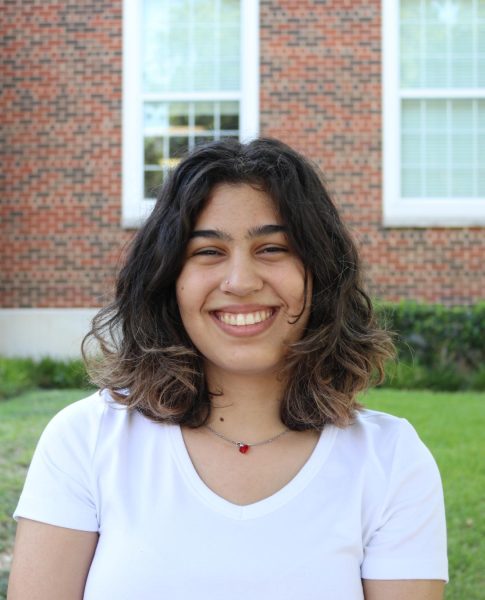According to photojournalist Kael Alford, photography is the poetry of the visual arts.
After graduating with an English degree and a dream of becoming a poet, Alford was quickly drawn to the vivid and blatant depictions of humanity in photographs. She started her career as a photojournalist with a daunting task, covering the tumultuous events in the Balkans accompanying the devolution of Yugoslavia.
Shortly afterwards, she worked as an independent journalist in the midst of the Iraq War, also known as the Second Persian Gulf War. Her decision to cover the war was influenced by her time in the Balkans, where she was inspired to record the impact of the conflict on civilians, the victims of history. Her photographs of the war were published in her first book Unembedded: Four Independent Photojournalists on the War in Iraq.
As Alford discussed her work experience, and honestly for the entirety of the presentation, I was in awe of her bravery and startling ability to capture authentic displays of humanity despite danger and chaos.
In a brief conversation with Alford after her presentation, I learned that the physical proximity to the subject of her photos and the quick return is what exhilarates her. Instead of having to take notes, then go home and spend time writing an article, photography is like a record of her memories, allowing her to take photos alongside her experiences.
Alford expanded upon the importance of photography for recording and comprehending our history. Referring to several well-known photos from the civil rights movement, She emphasized how photography can be used as a powerful social tool, a method to change social consciousness.
Although the Civil War was the first significant socio-political change in the U.S. to be captured on film, in the civil rights era, cameras became more mobile, light-weight, affordable and quick, allowing for these authentic snapshots of action.
Highlighting the work of civil rights photographer Charles Moore, Alford explained how a gripping and clear narrative was told through photos thanks to Moore’s compelling compositions.
In addition to covering social documentary, Alford also discussed human photography and art photography. The overarching connection between all the types of photography is that they are an expression of human nature. Ultimately, we are social creatures, and photographers use their art form to learn from and connect with a wide-range of humanity.
Based on its Greek roots “photo” and “graph,” photography is essentially writing with light. Alford emphasized that this is an important distinction to make as society transitions technologically alongside the development of artificial intelligence. AI can produce new images by processing millions of photographs and averaging them. However, these AI-created images are not photographs as they are not capturing and translating light.
Alford is concerned that with this exponentially-growing intelligence, it will soon be impossible to differentiate between photographs and AI-created images. With algorithmic biases and the ability to spread misinformation, especially at sensitive socio-political junctions, Alford believes that we need journalists now, more than ever, to help us determine what is real.




